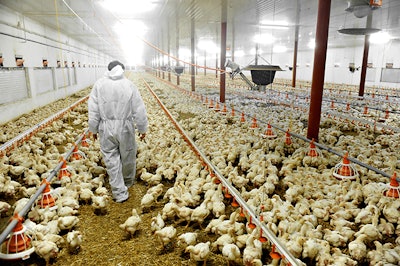
Two drugs commonly used to treat fleas in dogs and other pets could help minimize or even prevent bed bug infestations in poultry houses, revealed research published in Parasites & Vectors.
“Bed bugs used to be quite common in the poultry industry,” said Coby Schal, Blanton J. Whitmire Distinguished professor of entomology at North Carolina State University (NC State) and the corresponding author of a paper describing the work.
“Back in the early 2000s, they started coming back. We don’t know why but we suspect it’s because they have developed insecticide resistance to pretty much all the insecticides we use and globalization and travel.”
Once on the poultry farm, bed bugs can be very difficult to eradicate.
The possibilities of antiparasitics
The research focused on fluralaner and ivermectin, which are most used as an antiparasitic for household pets, including dogs and cats, farm animals, such as horses, and even people, particularly in Africa.
“I was very interested in addressing this type of approach because it can be cost effective, compatible with a production system and it can be incredibly effective if you find the right material,” Schal explained.
In addition, although fluralaner is not yet approved for use in poultry in the U.S., it is approved for use in Europe and Australia. Because of this, a form of fluralaner specifically formulated for dogs was used to test proof-of-concept.
“It’s really important to note that it’s not a formulation that would be used commercially,” he noted.
The results
Both drugs were effective at killing up to five different strains of bed bugs in the lab. However, fluralaner was more effective at targeting bed bugs that were resistant to common insecticides.
In addition, fluralaner showed greater effectiveness than ivermectin when given in drinking water in the poultry barn. This could be because the ivermectin is metabolized more quickly by poultry, Schal added
The next step for this research is test the effectiveness of the drugs at commercial poultry farms.
“It’s important to recognize that there’s never a silver bullet. Fluralaner may be effective for a while, but we expect that if we use a lot of it, and we use it routinely, bed bugs will become resistant. We always have to look to the future and we always have to think of the long-term approach,” Schal concluded.





.jpg?auto=format%2Ccompress&fit=crop&h=167&q=70&w=250)












